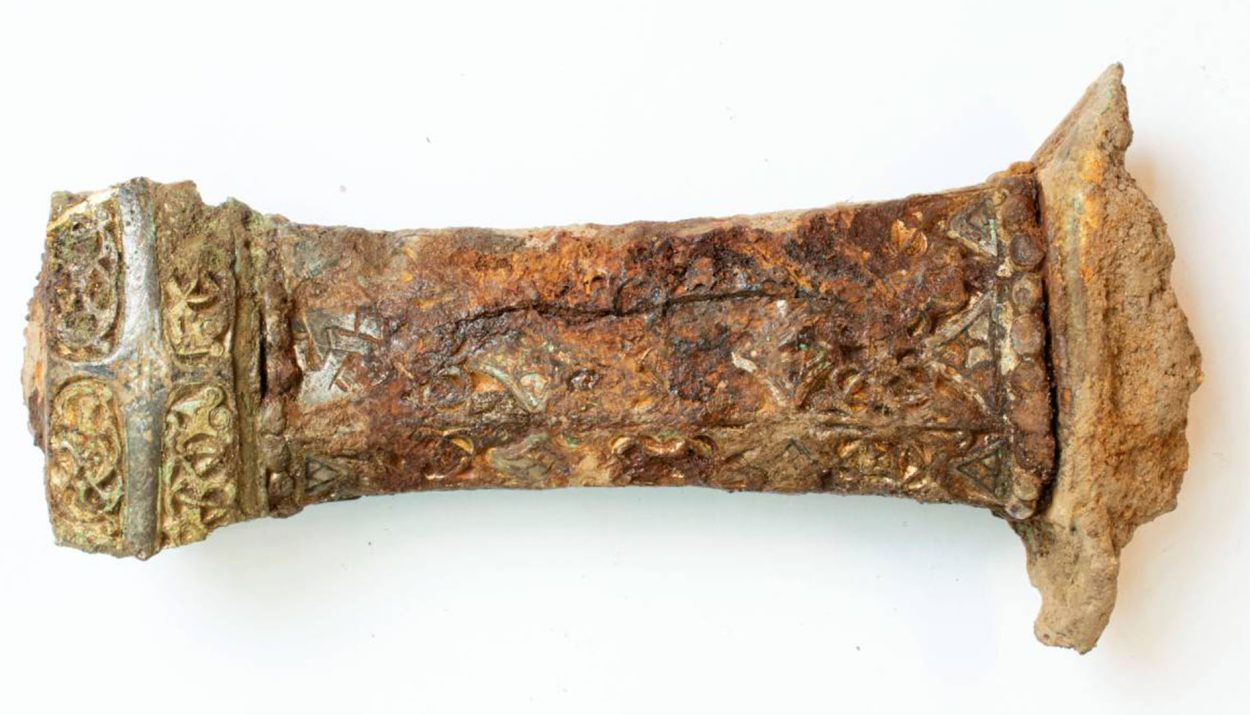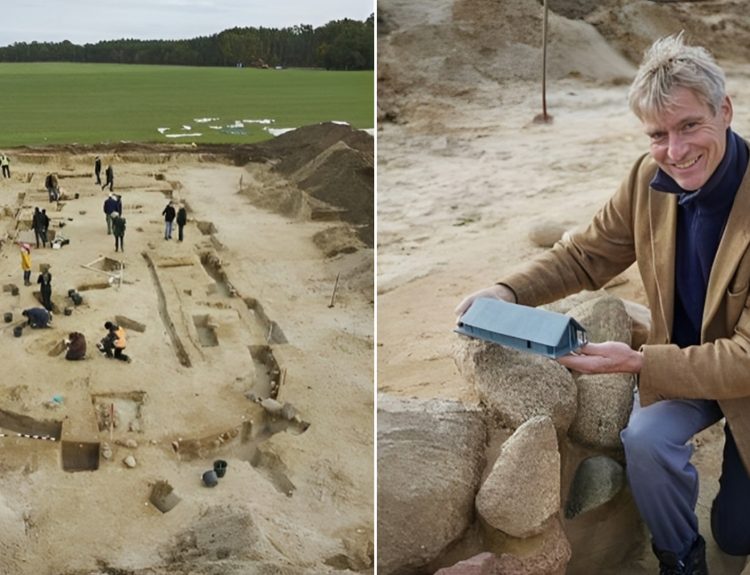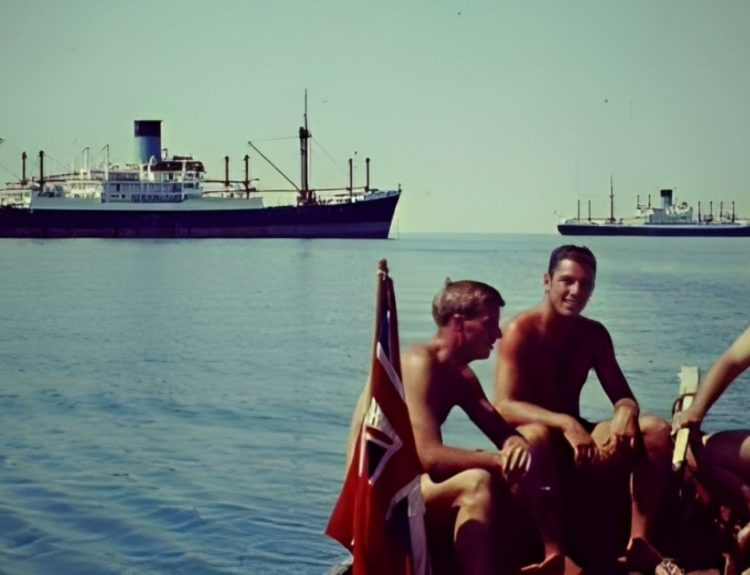A boy on a treasure hunt on his family’s farmland in Stavanger, Norway, unearthed a metal object a few years ago. He could tell it was old, but he wasn’t sure what it was. Nor did the local scientists who examined the artifact. But one year later, the pieces fell into place … literally.
One year after the boy found the item, his buddy brought his metal detector to the area and – lo and behold! – he, too, discovered a metal artifact. When the scientists took a look at this fragment, they couldn’t believe their luck. It was an exact fit with the earlier artifact – and together, they revealed the item to be a 1,200-year-old Viking Sword.
A Charming Story
Admittedly, it is not that rare to find two pieces of a broken artifact in the same area. After all, if the object was lost there, it is likely that it will be found there. Maybe the sword was discarded because it was broken or perhaps it broke in two during its century beneath the earth.

But what makes this story a charming one is that the two pieces were discovered nearly one year apart and by two best friends. It makes for a dual discovery and a shared experience for the two archaeology-loving pals.
A Rare Find
The two parts brought together again, the Viking sword was examined by Ann Zanette Glorstad, an archaeologist at Norway’s University of Oslo. After roughly 1,200 hiding in the ground, the sword had been damaged, but she could still identify the type of sword it was.
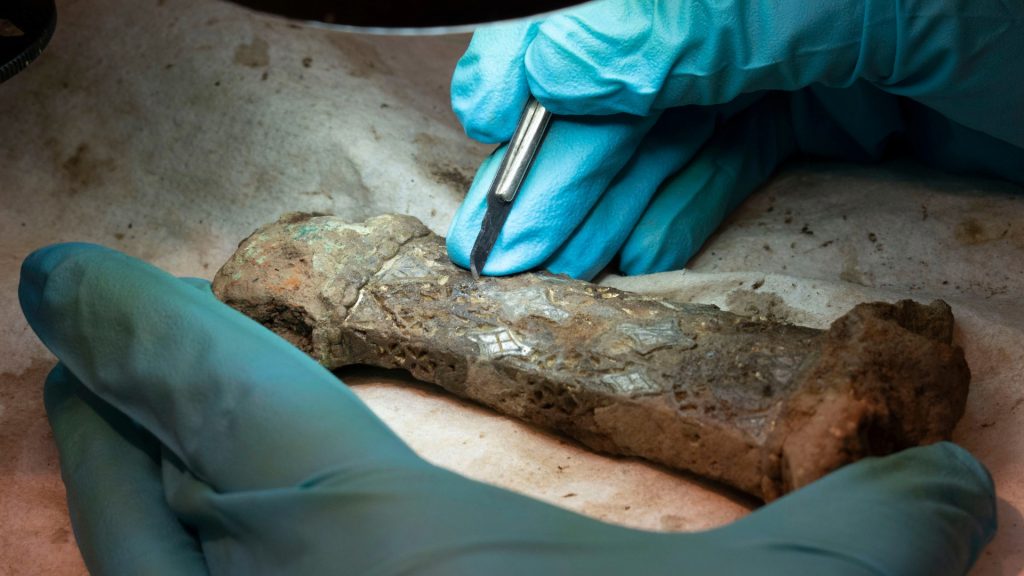
Glorstad explained, “The sword is probably what we call a D-sword … one of the richest ornamented and heaviest sword types of the Viking Age.” She added that it is “still difficult to see all the details, but the décor includes elements of the typical animal style from the Late Iron Age.”
A Word About the Vikings
It is important to note that the Vikings were not one group of people. Rather, the Viking name was loosely applied to the various tribes living in Scandinavia in the 8th to 11th centuries. In general, the Vikings were excellent sailors and navigators who explored far beyond the region that now makes up Norway, Sweden, and Denmark.
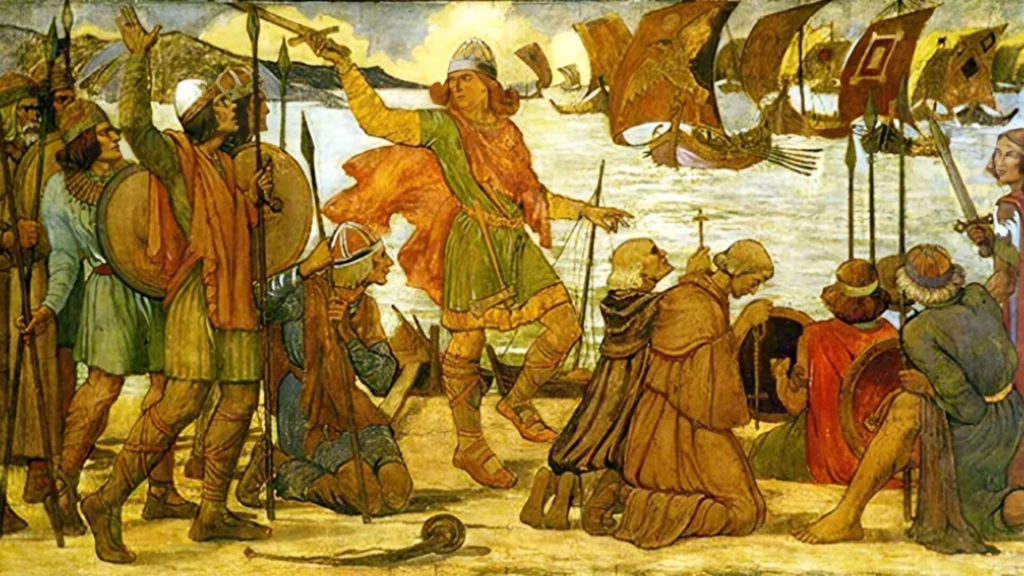
Vikings sailed around the North Atlantic and set up settlements in what is now Iceland, Greenland, and Canada. They even sailed around the British Isles, along the coast of Europe, and into the Mediterranean Sea. Along the way, they raided villages and battled with other tribes, such as the Saxons. Even as they were admired for their sailing prowess, they were feared for their ferociousness in battle.
The Vikings Were Traders, Explorers, and Conquerors
During the time of the Vikings, the people of Scandinavia established trade with various groups … even kingdoms as far away as Constantinople in present-day Turkey and parts of Arabia. Wherever they traveled, the Vikings left behind proof that they were there.
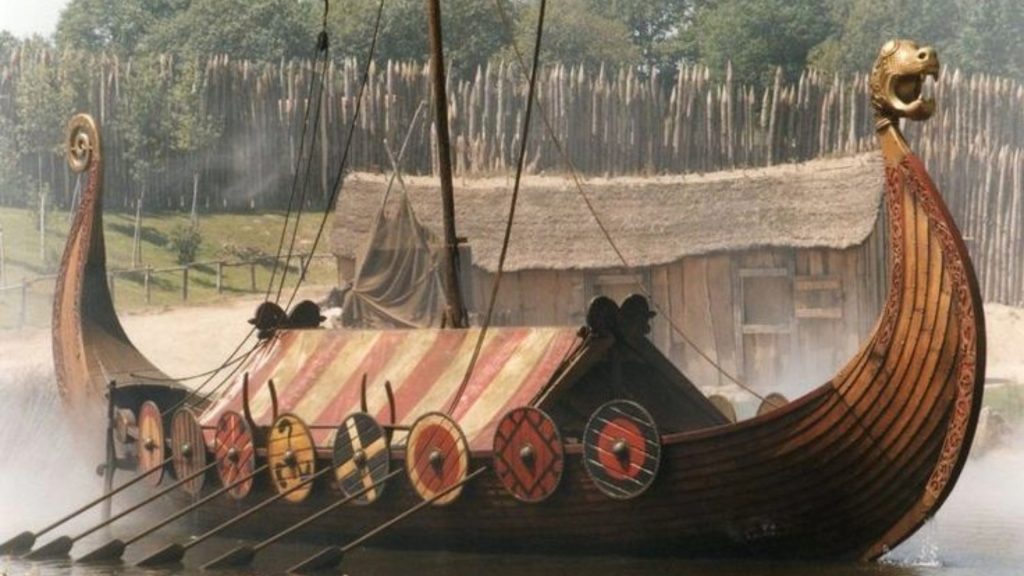
Viking artifacts have been discovered in archaeological sites across Europe and even in North America. Coins, swords, tools, and other items dating to the Viking era continue to be unearthed.
Scandinavia During the Iron Age
The Vikings of Scandinavia were at a disadvantage during the Bronze Age. They lacked the natural resources to produce bronze. But when metalworking technologies advanced and iron could be made into metal, the Vikings quickly learned how to craft tools and weapons from the strong, versatile iron.

Iron plows made farming practices more efficient. And iron weapons, including swords, helped to reinforce the Viking’s reputation as fierce warriors.
A Viking Artifact Found on Viking Soil
The D-Sword that the two boys discovered was found in the Norwegian city of Stavanger. One of the country’s oldest cities, Stavanger is a coastal community near the southern tip of Norway. This area, with its proximity to the sea, has a rich Viking history.
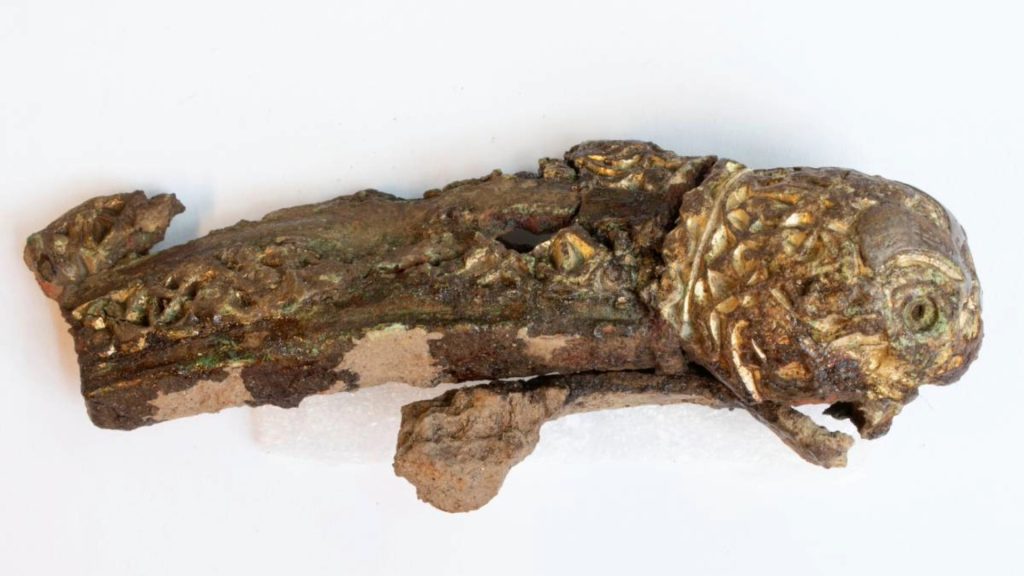
It should surprise no one that a Viking artifact would be found on Viking soil in a location that was known for its strong Viking heritage. But this newly discovered sword has more to tell … including its non-Viking origins.
The Viking D-Sword
When it was new, the Viking sword had a hilt that was intricately carved and bedazzled with gold and silver. All Viking D-Swords featured an animal on the cross guard, however it is impossible to identify the animal that was supposed to guard this sword. It is too weathered.
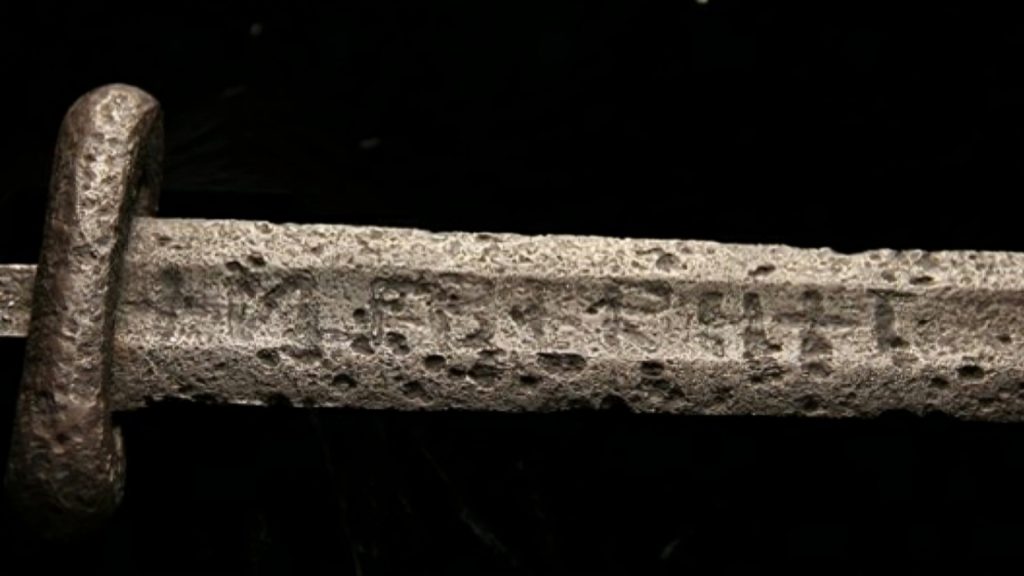
Viking swords were double-edged weapons. The blades typically had a groove running the length of them which was called a ‘blood groove’ for obvious reasons. Viking metal workers created strong, durable blades by welding together strips of iron and hammering it into shape. Iron was costly, so swords like this one were wielded by the wealthy elite.
The “Niello” Technique
Glorstad observed that the silver animals adorning the sword’s hilt were created using the ‘niello’ technique. This means that parts of the decorative silver pieces were colored black by mixing the silver with other minerals. It allowed the craftsman to make artful patterns and designs.

The niello technique was first introduced during the medieval era when metalworkers began experimenting with various techniques to enhance the designs. As Glorstad explains, it also tells us the sword was not crafted in Norway.
A Viking and His Sword
Swords like this one make for especially exciting finds. For Viking warriors, their swords were more than just a weapon, they were a status symbol and a trusty companion. Great care was taken to keep swords in good condition.

A Viking warrior might be buried with his sword when he died, or he may have passed his sword onto his son. The Viking sagas also tell us that warriors liked to give their swords menacing-sounding names, like “Battle Ice,” “Bloodaxe,” “Fireblade,” and “Serpent’s Tongue.”
Where Was the Sword Made?
According to Glorstad, the niello silver on the sword’s hilt tells us that the sword came either from England or from the Frankish Empire. The Vikings regularly interacted with people living in what is now England. Vikings raiding and plundered villages along the eastern coast of the British Isles.
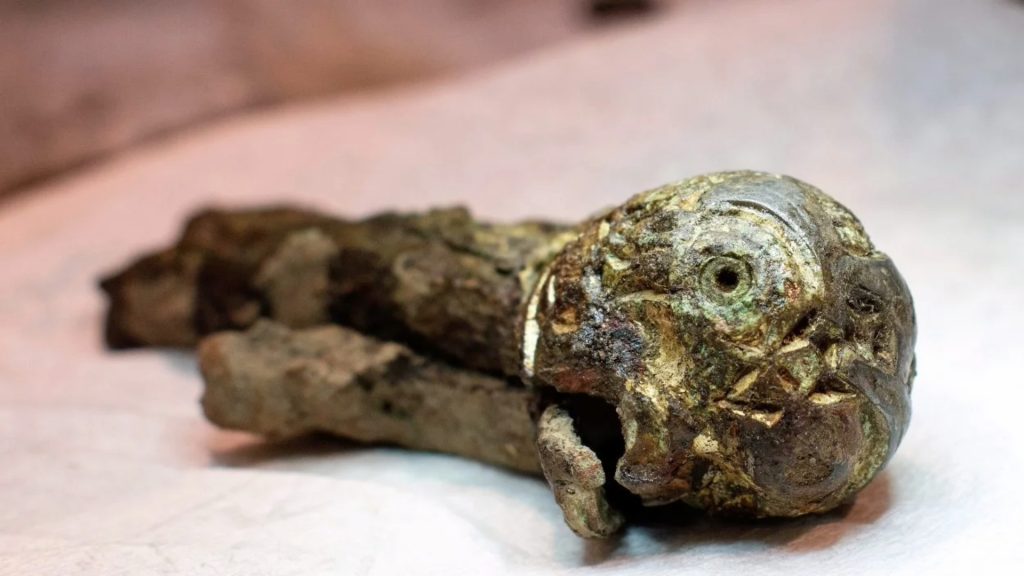
Beginning around 860, the Viking raiders stuck around instead of returning to Scandinavia after looting unsuspecting English villages. The Vikings stayed … and flourished. In time, they defeated most of the Anglo-Saxon kingdoms and exerted their power over the region. Perhaps the sword the boys discovered once belonged to a Viking living in England.
The Frankish Empire
The Carolingian Empire, which was commonly called the Frankish Empire, was established in what is now France, as well as parts of neighboring countries such as Switzerland, Belgium, the Netherlands, and Luxembourg. The Franks came to power as a result of the Treaty of Verdun in 843.
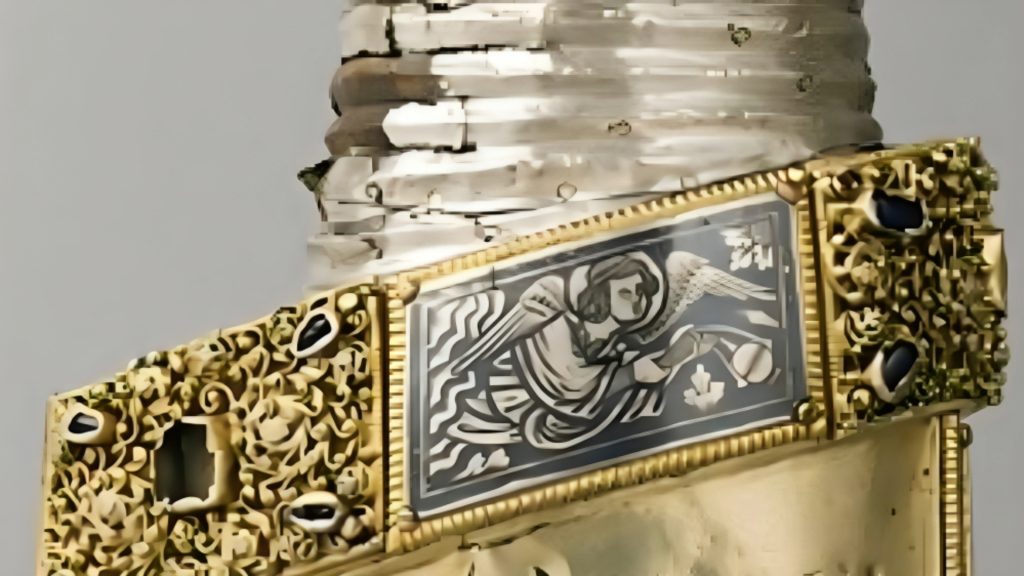
Under the terms of this treaty, the land that had once been ruled by Charlemagne was divided three ways and given to his grandsons. Just two years later, in 845, the Vikings sailed up the Seine River into Paris with a fleet of 120 Viking longboats and an army of more than 5,000 warriors. The sword may have come from the Siege of Paris.
Could the Owner of the Sword Been a Queen Rather Than a Warrior?
Glorstad mentioned another possible contender who may have owned the sword. The Gausel Queen! Not far from the place where the two boys recently found the Viking sword is the site of the Gausel Queen’s grave. Who was the Gausel Queen? Well, we don’t know. But we do know that she was rich!

In 1883, the grave of a woman was discovered in Stavanger. The grave is, to date, the richest woman’s grave from the Viking Era. Buried with the wealthy woman were gold, silver, bronze, and pearl jewelry, knives, kitchen utensils, and religious artifacts – more than 40 in total. The identity of the woman is unknown, but due to her wealth, she is believed to have been a queen.
An Artifact Worthy of a Museum
The Viking sword that the boys found is an impressive discovery that helped add to our understanding of the Viking Era. Glorstad and her team are continuing their investigation into the artifact, but it will most likely end up in an area museum.

Metal detectorists have searched the area where the boys unearthed the sword and got no other hits. As for the young friends, we can safely say that they will continue to hunt for Viking artifacts around Stavanger. Who knows what else they will find.

